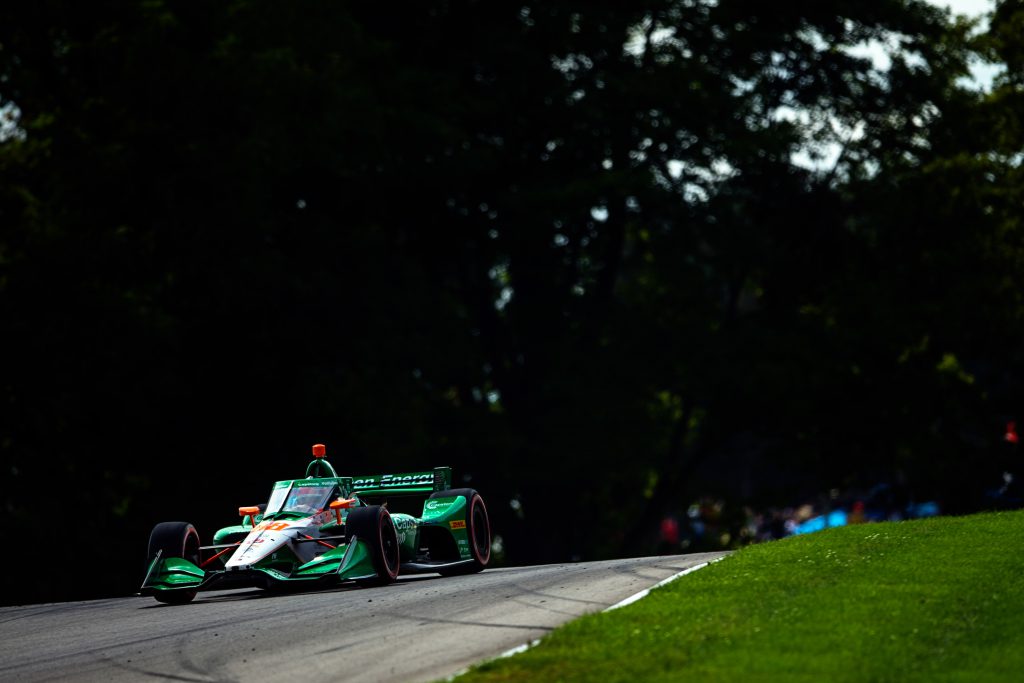For IndyCar fans, an Andretti Autosport 1-2-3 probably doesn’t feel like a surprise (even though it went 15 years without one).
As one of America’s biggest and best teams led by a family dynasty that screams success, a podium sweep is just the kind of result you expect it’ll achieve at times, as you do with a Team Penske or Chip Ganassi Racing.
However, before last weekend’s Mid-Ohio event, Andretti had just one podium from the entire 2020 IndyCar season.
That’s an incredible stat considering its pedigree and the fact it had entered five cars (filling nearly one quarter of the field) at every race and occasionally six.
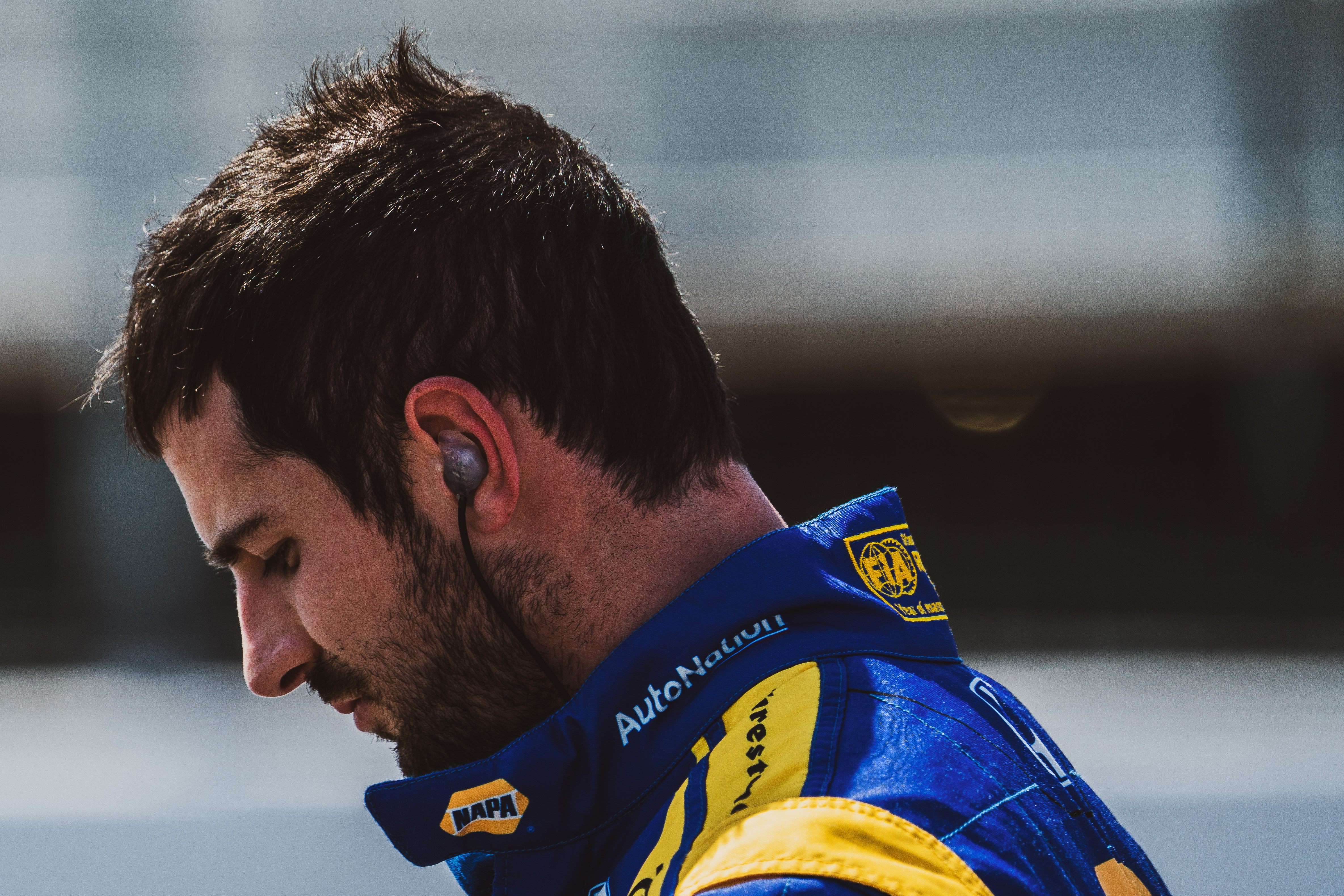
The biggest struggle could be found in the most unlikely place. Alexander Rossi has been Andretti’s main title hope in recent years, finishing second in the 2018 standings and third last year. But he was just 18th in the standings entering the double-header last weekend.
Admittedly, he’d been the one to bag that solitary podium earlier in the year at Road America, but the rest of his season had yielded only two top-10s.
Andretti’s fortunes turned around at Mid-Ohio, with Rossi third in race one and then sandwiched between Colton Herta and Ryan Hunter-Reay in Sunday’s 1-2-3. The title is well out of reach but the team’s actual form is back to a very respectable place.
“It’s [about] finding out how to make our dominant set-ups from last year work with the aeroscreen and the weight that it moves” :: Colton Herta
Even though the team has struggled, it hasn’t all been bad and those discussing an ‘Andretti slump’ would do well to take a look at Herta’s results this season.
The sophomore driver – who won twice last year but missed out on the Rookie of the Year title through a lack of consistency – has scored a top-10 at every race apart from the Iowa double-header weekend.
Short oval double-headers aren’t ideal territory for a team that’s had a weakness on those tracks at times lately, but Herta had looked strong before he didn’t get the message a restart had been called off and crashed into the back of Rinus VeeKay in a terrifying accident.
“It was a tough one to kind of swallow, obviously,” Herta said when asked about the Iowa weekend by The Race.
“We kind of shot ourselves in the foot there because we crashed and then couldn’t really get the car fully repaired – or we thought we got it fully repaired but something was off because we were so bad on the second day.
“So we finished [19th] on the first day and then 19th, last of the people that ran the whole race, the second day.
“Yeah, it was kind of depressing, but you can always take positives out of it.
“Now we know that’s not going to happen again and we kind of got through situations. We had some little bugs to get through. I don’t want to say I’m happy it happened, but it’s kind of a good thing in some ways that it happened.”
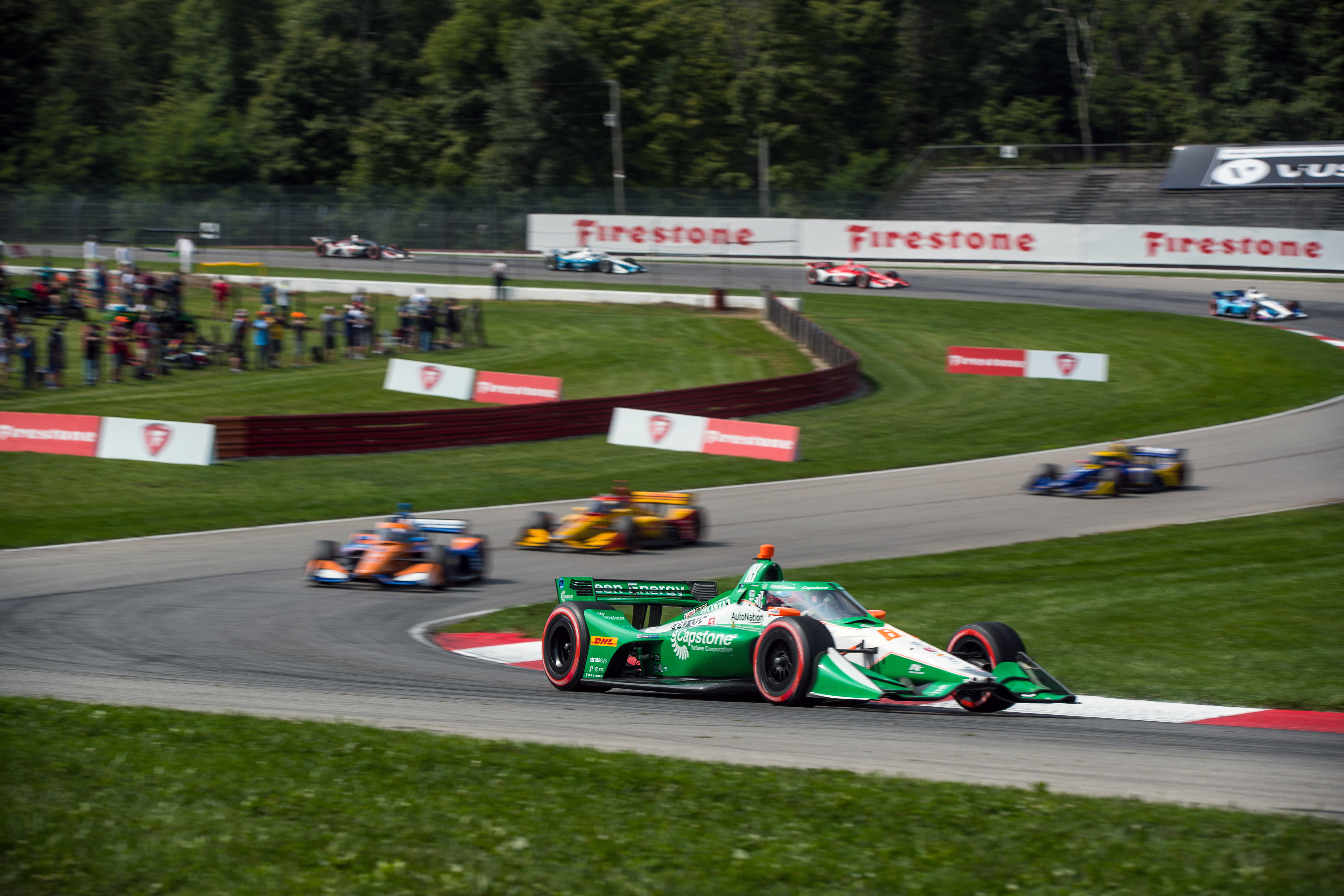
Now with the win in the second race at Mid-Ohio, Herta has vaulted to fourth in the standings and is 56 points from second place with three rounds remaining, two of those being at the Indianapolis road course where he finished fourth earlier in the season.
For Herta, finding that consistency was a key element to his off-season last year. He rejected offers to join other teams and came fully under the Andretti banner for 2020, having run for the satellite Harding Steinbrenner operation last year.
He certainly appears to have found that consistency, but as The Race delved into following the Iowa weekend, he’d struggled to find the peaks that he had in 2019 with his two race wins.
Herta believes the team has found the issue though, and is looking like a regular win threat once more.
It’s easy to forget that IndyCar has gone through one of its biggest car changes for a long time in 2020 with the new aeroscreen. It’s added weight at the front of the car and high up, which impacts car and tyre performance and wear, while also changing characteristics in traffic.
“It’s finding out how to make our dominant set-ups from last year work with the aeroscreen and the weight that it moves,” says Herta, responding to The Race about where that upturn in form has come from.
“So we had an idea of what we thought it was going to do, and it didn’t do that, so we’ve kind of been trying ideas on how to get our set-ups back to where they should be, or back to where they were last year because we had a lot of really good race cars last year.
“To get a sweep of the podium justifies their efforts when it’s all been in the shit” :: Alexander Rossi
“I think we kind of found it, this thing that works, so we can come to the track with our set-ups from last year and they’re relatively similar and they work relatively well.
“That’s not to say that that’s everywhere. Obviously it changes different weekends. But we definitely made a big breakthrough in the last few races.”
Herta believes Andretti’s “little bit of a slump” really ended – at least in performance terms – ahead of the Indianapolis 500 last month, and reckons that on pure speed the team has “really been the cars to beat, I think” since then.
He admits that Andretti “really haven’t maximised our potential” except for the Mid-Ohio podium sweep, “but I really believe that we kind of figured it out and we’ve had really solid cars”.
For Rossi, a few technical issues, getting caught up in incidents not of his own making and a couple of uncharacteristic mistakes have led to the hole his championship bid fell into, along with that Andretti-wide fight to find ultimate pace with the tyre/aeroscreen combo.
The only positive after the miserable first few rounds was that there’s not been a weight of expectation on him and the team as part of a championship run-in, which can open up a window to be a bit more risky with the car.
If you haven’t followed IndyCar in 2020, weekend schedules have been more condensed, meaning drivers like Scott Dixon and Josef Newgarden – the championship contenders – have both discussed the need for guesswork. That’s hard to believe when you consider they’ve won six of the 11 races this year between them.
With a short practice and not much time between qualifying and the race – where cars are often in parc ferme – teams have to home in quickly and fix the biggest issues with set-ups on their cars. They don’t have the luxury of trying eight different things and have to make changes based off what they think might happen as opposed to what they know, or have tested.
There’s less simulator time and basically no in-season testing too, so teams are coming to the track less prepared than ever. It’s a perfect storm meaning you only have to be a little bit off in certain areas and in a single-chassis series, which is often labelled one of the most competitive in the world, it’s easy to get behind the eightball.
Asked by The Race about how the freedom of not fighting for the title has helped lately, Rossi replied: “I think what it’s done is this year has given us a very good way, or ability, to identify our weaknesses and really try and rectify them.
“Starting really after Indianapolis and all the way through the year, and [we need to] really use this off-season to our advantage to fix the things that are obvious that we’re struggling with so that next year we’re not doing the same things, having the same problems and having two years like this.
“At this point we’ve chalked up the year.
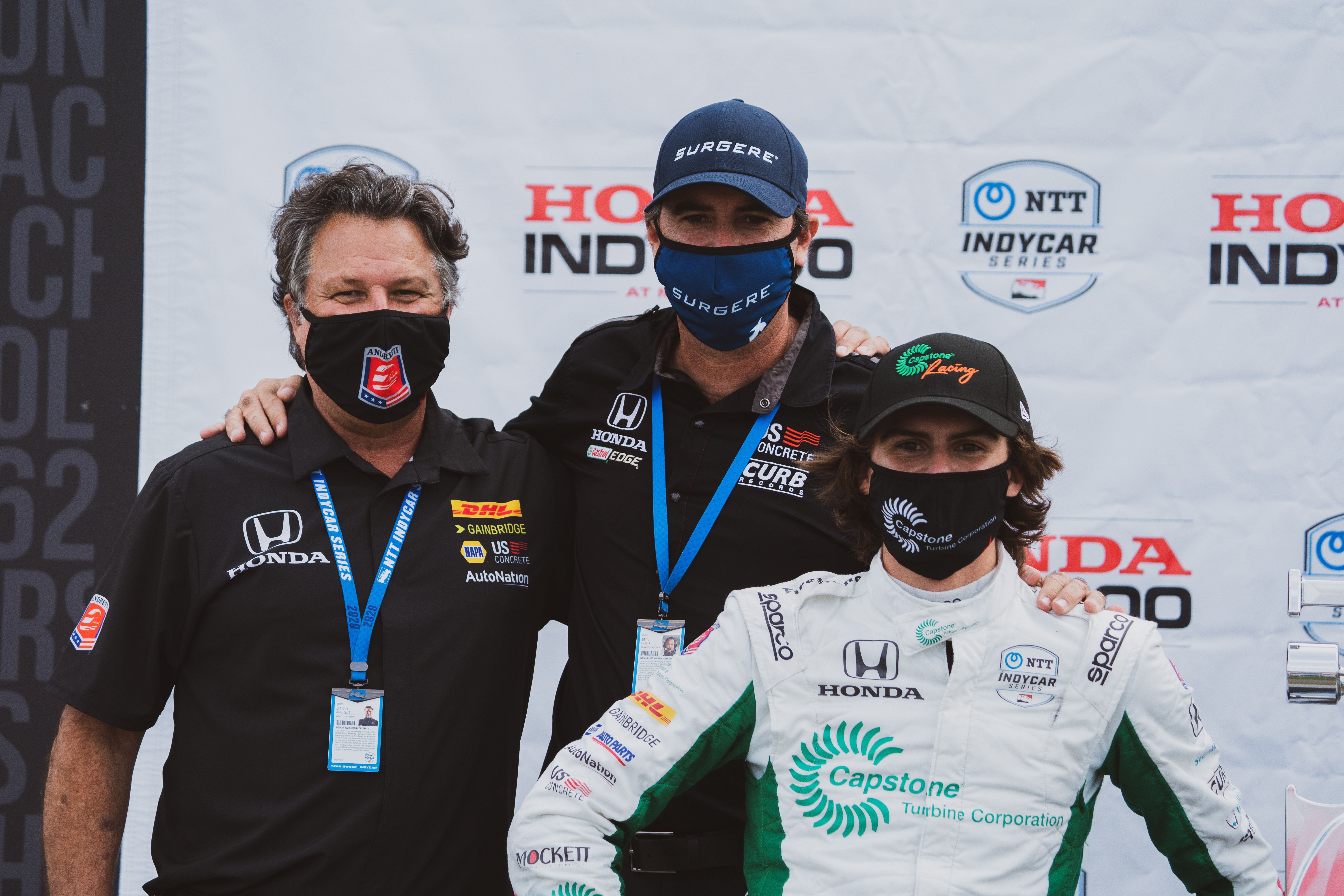
“We’re just doing our best to get results, but really we’re trying on and off the track to develop what we’re doing as a team to just improve, and I think this is a huge confidence boost for the guys at the track and back at the shop in Indianapolis.
“To get a sweep of the podium justifies their efforts when it’s all been in the shit, honestly.
“It’s good for them, and it’ll reset everyone, I think, and the mindsets going into this little gap that we have before the Harvest GP [Indianapolis road course races].”
Perhaps an area where Andretti has also been hit hard is the calendar reshuffling. IndyCar has done a phenomenal job to approach double-figures with its schedule, but some of the races lost were traditional Andretti strongholds.
Couple that with double-headers at tracks it historically hasn’t been great at, and combine that with the underperformance at its better venues, and you start to see how little things have combined into a big old road block for this team in 2020.
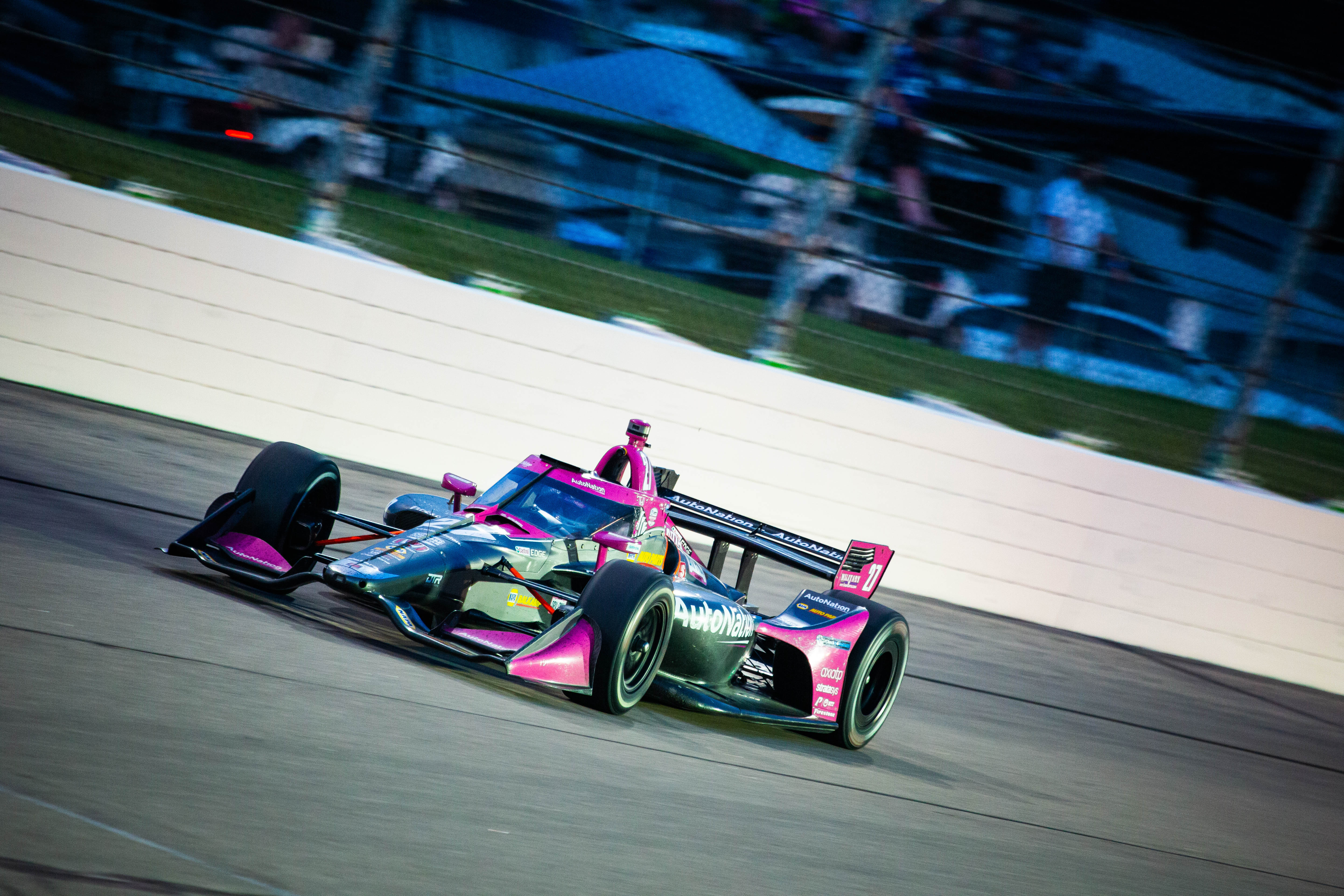
“Having double-headers at short ovals is not great for us, but I’d say really that’s the only thing that’s been a negative,” said Rossi.
“Losing the street courses obviously, that’s also doubling up on our worst type of track and it’s taking way our best type of track. That’s obviously in play.
“But at the end of the day we’ve been good at Road America, we’ve been good at Texas, obviously we’ve been great at Indianapolis and we still didn’t get it done this year. There’s been a lot of things going on. The calendar is not to blame for it.
“I think it’s been a challenging year for everyone for obvious reasons on and off the track, and it’s just been a lot of different circumstances that we just haven’t had go our way.
“It’s not necessarily the fault of anyone. It’s just the way things go sometimes in racing and in life. If you look at the #88 car [Herta], they’re having a pretty good year, I guess. But yeah, for Ryan and I, it’s been just relentless, one thing after another.
“But like I said, it’s behind us now. There’s nothing we can do about it. All we can do is focus forward and do all we can to close out the year on a high.”
It’s especially gutting when what feels like the thing most IndyCar stakeholders care about – the Indianapolis 500 – didn’t go to plan for Andretti either.
Rossi was pinged for an unsafe pit release while racing eventual winner Takuma Sato out of the pits, while the rest of the team was mired in mediocrity in race pace, having dominated most of the sessions leading up to the event.
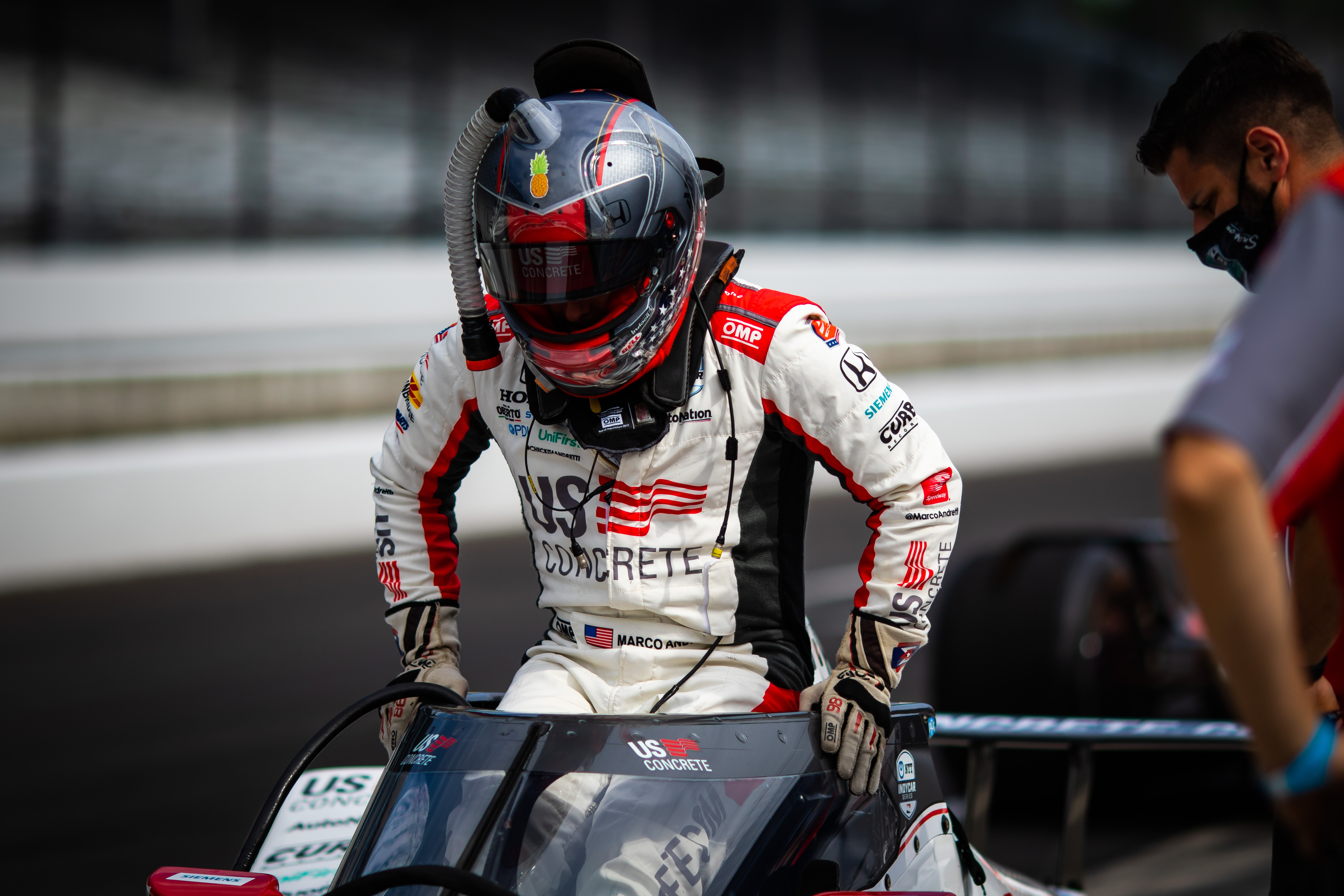
A woeful season for Marco Andretti at least features the upside of scoring pole position at Indy after a 33-year wait for his surname to top the charts. The rest of his season, along with Zach Veach’s, features little to write home about. The affable Veach could well find himself without a seat next season following a disappointing contract renewal year.
Marco Andretti and 2012 IndyCar champion Hunter-Reay are also in the last years of their deals, but Hunter-Reay appears to be safe for next year thanks to his long-time partnership with backer DHL.
A few too many errors have proven costly for Hunter-Reay – who is in ninth in the championship, the only other Andretti driver besides Herta in the top 10. Hunter-Reay has only finished in the top five in the standings once since his title win, although he has only one finish outside the top 10 in the same period.
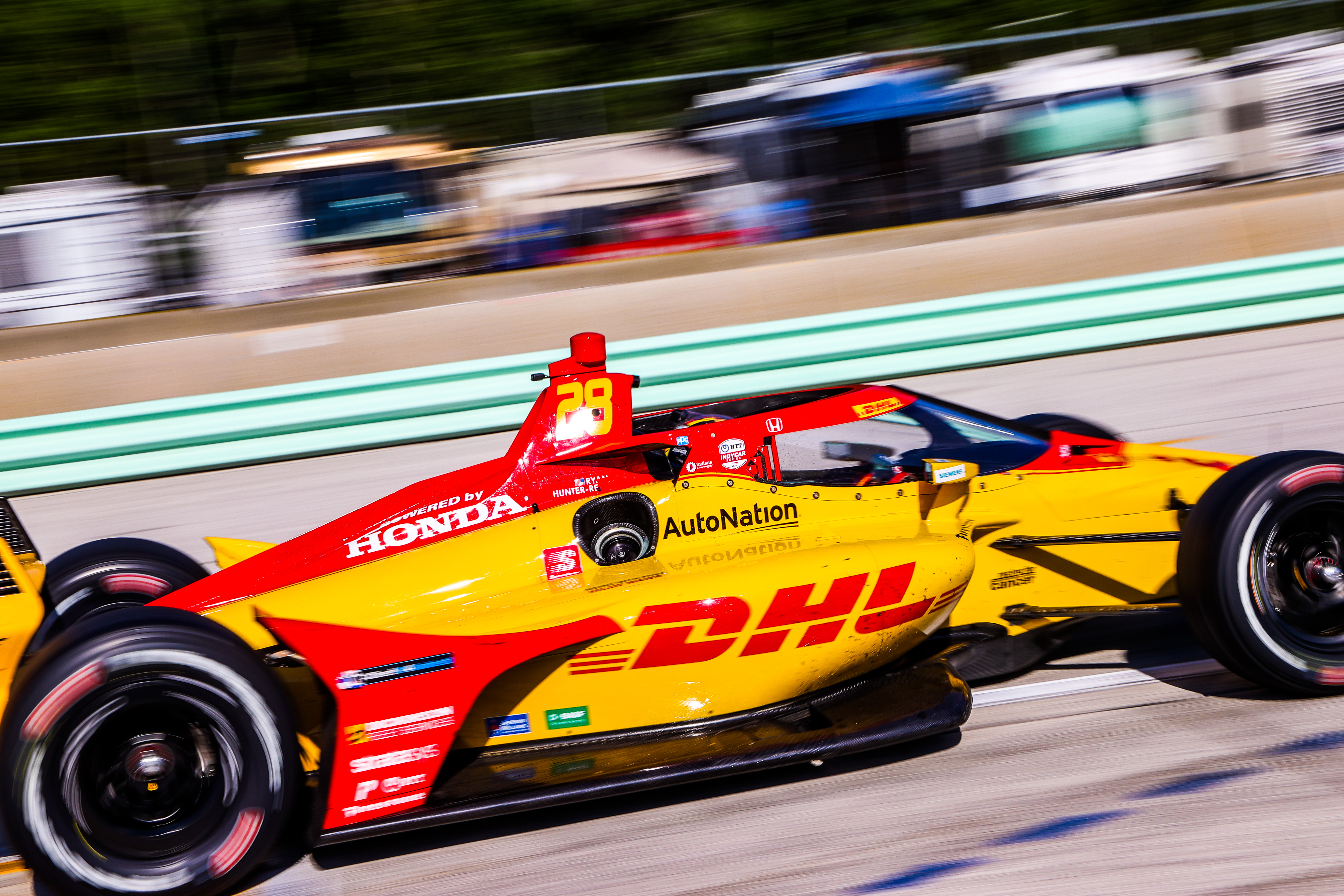
Another Indy road course event is up next, and that’s not the ideal place for Rossi, having struggled on that configuration in the past – indeed, Herta was the only Andretti top-10 finisher there earlier in the year – but the anticipated season-finale at St Petersburg is a good venue for the team, and at the very least 2020 can be chalked up as a year that has provided a lot of data.
Like Herta and using his off-season to focus on consistency, the Andretti operation must focus on pure performance over the winter and use that to fight back in 2021.
It’s really inexcusable that a driver of Rossi’s calibre isn’t in the title hunt, but it will be even worse if the lessons from this year aren’t taken on board not just by Rossi but by the rest of the Andretti operation.

